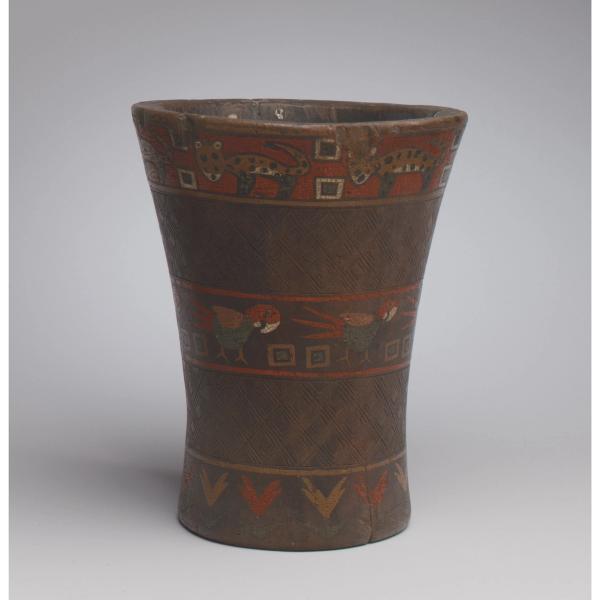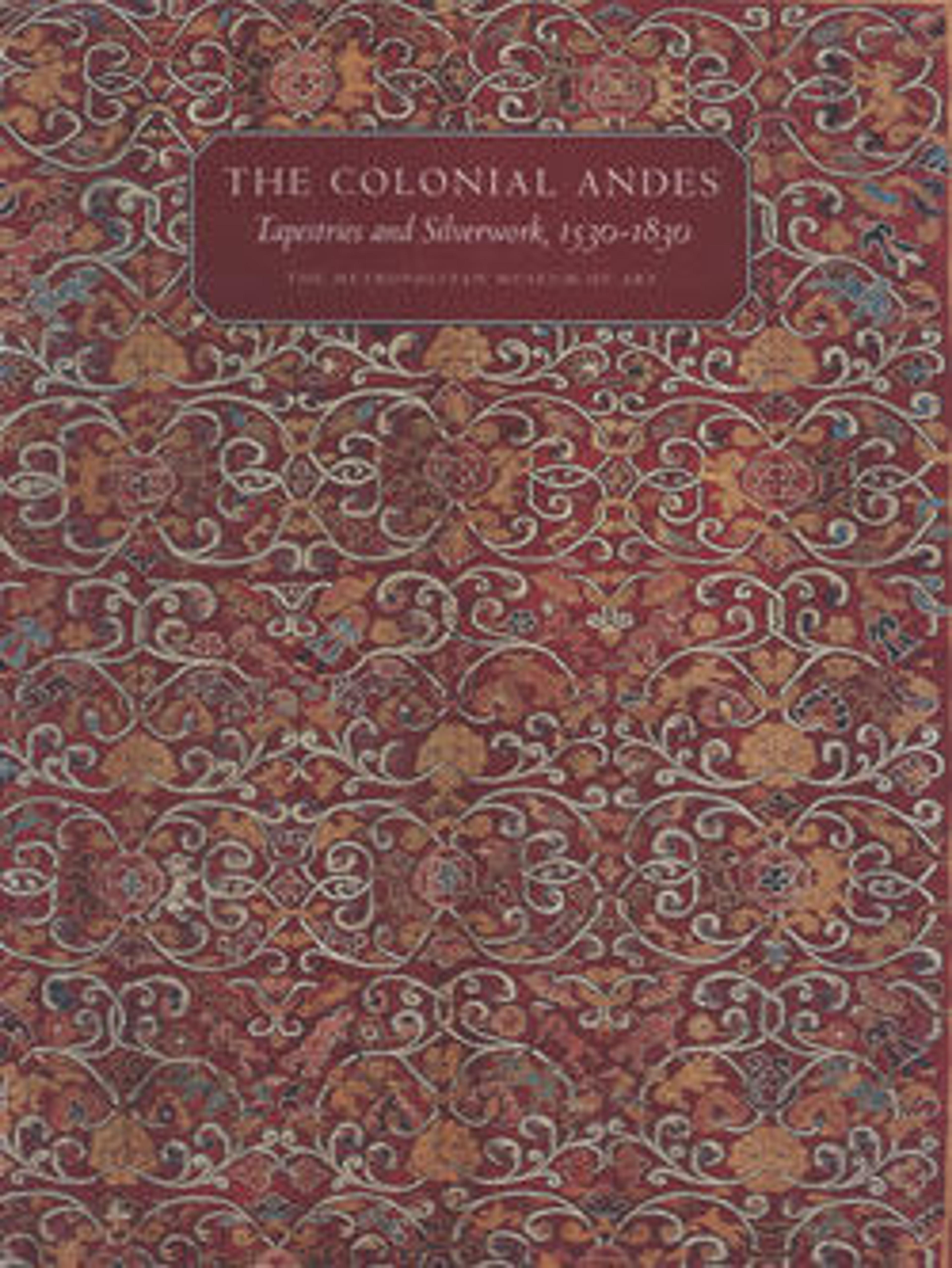Kero (beaker)
Artwork Details
- Title: Kero (beaker)
- Artist: Peruvian artist(s)
- Date: Late 16th century
- Geography: Peru
- Culture: Quechua
- Medium: Wood, pigment, resin
- Dimensions: H. 8 5/8 × Diam. 6 13/16 in. (21.9 × 17.3 cm)
- Classification: Wood-Containers
- Credit Line: Bequest of Arthur M. Bullowa, 1993
- Object Number: 1994.35.14
- Curatorial Department: The Michael C. Rockefeller Wing
Audio

1650. Kero (beaker), Peruvian artist(s)
Hugo Ikehara-Tsukayama
JOSÉ MARÍA YAZPIK (NARRATOR): This wooden vessel is known as a ‘kero’ in the Quechua language.
HUGO IKEHARA-TSUKAYAMA: These kind of objects were not made for celebrations as in the Inca times. They are really big. It’s almost uncomfortable to drink from them when they’re full.
JOSÉ MARÍA YAZPIK: Hugo Ikehara-Tsukayama, Metropolitan Museum of Art.
HUGO IKEHARA-TSUKAYAMA: It’s richly decorated with bands of jaguar, parrots and flowers. The painted squares and engraved grid on the background replicate the geometric designs often found in Inca garments and ceramic vessels.
JOSÉ MARÍA YAZPIK: This kero, made in the Spanish colonial era, is modeled after those earlier, Inca versions.
In the 15th century, at the height of the Inca empire, leaders used keros ceremonially to open negotiations and celebrations with people or with divinities.
HUGO IKEHARA-TSUKAYAMA: The act of libation was not only an enjoyable moment during ceremonies but an invitation to start social relationships based on reciprocity.
JOSÉ MARÍA YAZPIK: However, the kero on display here had a very different purpose and meaning.
HUGO IKEHARA-TSUKAYAMA: In the colonial era, indigenous rulers became middlemen between the Spanish administration and the local population. Privileges of the position came with the responsibility of enforcing taxation for the Spanish crown. Their position was dependent on their links to the former Inca nobility or Inca royalty. In order to demonstrate their lineage, a new kind of colonial indigenous art emerged, one that highlighted Inca culture in ways that were not done during the Inca times.
JOSÉ MARÍA YAZPIK: This kero is part of that emergent artistic tradition.
HUGO IKEHARA-TSUKAYAMA: The colonial keros were important because they highlighted, often in exaggeration, its exotic character and Incaness. But also something that people from Europe were taking home as an exotic symbol of their presence in Peru.
More Artwork
Research Resources
The Met provides unparalleled resources for research and welcomes an international community of students and scholars. The Met's Open Access API is where creators and researchers can connect to the The Met collection. Open Access data and public domain images are available for unrestricted commercial and noncommercial use without permission or fee.
To request images under copyright and other restrictions, please use this Image Request form.
Feedback
We continue to research and examine historical and cultural context for objects in The Met collection. If you have comments or questions about this object record, please contact us using the form below. The Museum looks forward to receiving your comments.
